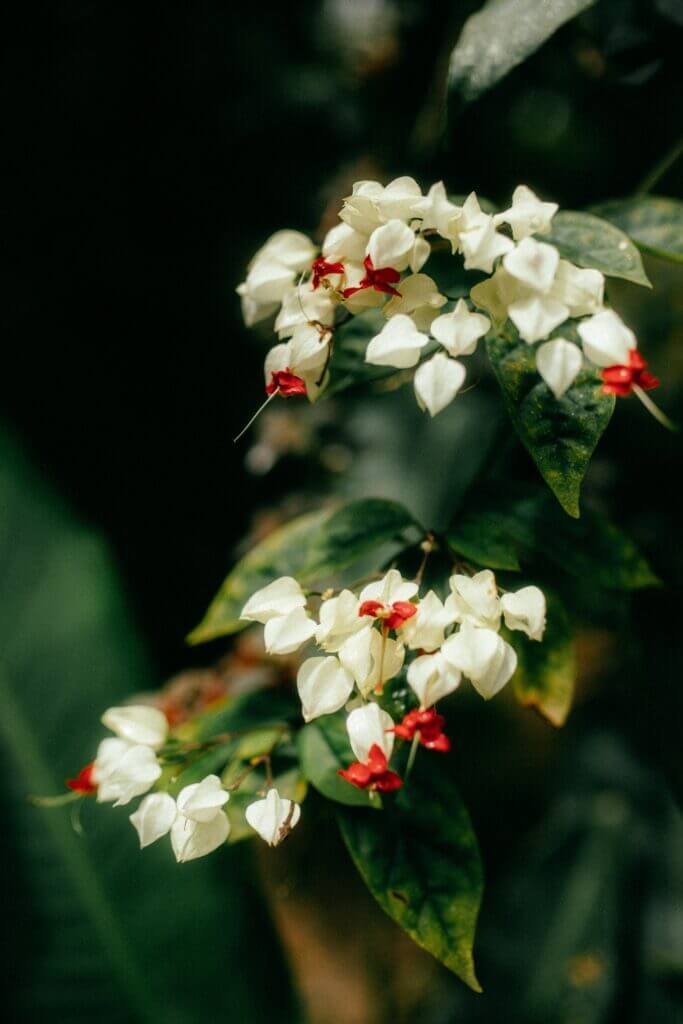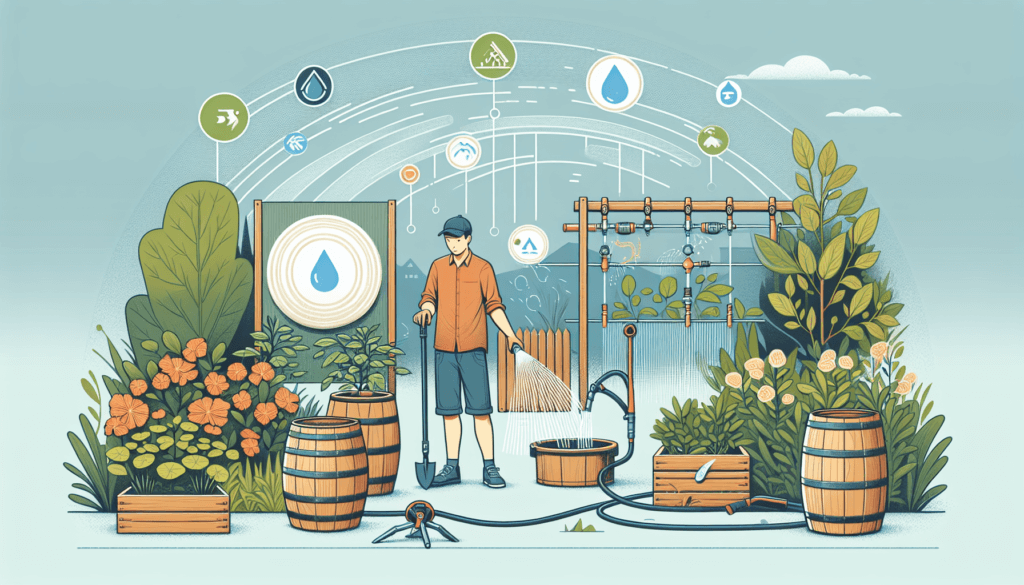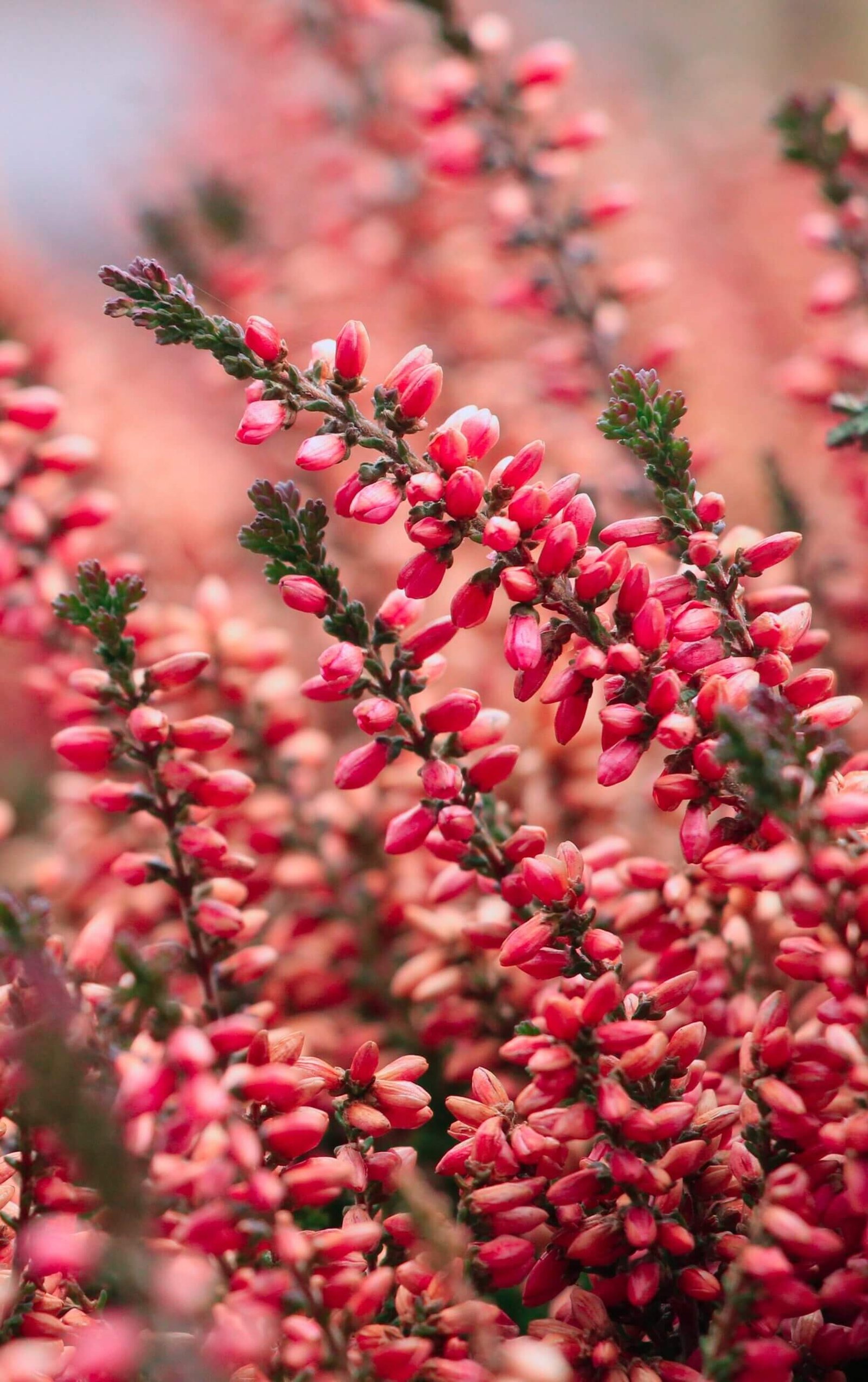Are you tired of spending excessive amounts of water to keep your garden looking lush? Well, worry no more! In this article, you will discover some simple and effective tips on how to save water in your garden. From using mulch and collecting rainwater to maintaining proper irrigation systems, you’ll learn practical ways to conserve water while still enjoying the beauty of your outdoor oasis. So, let’s get started and make your garden more water-efficient!

Choose Water-Efficient Plants
Select Native Plants
When it comes to choosing plants for your garden, opting for native plants can greatly contribute to water conservation. Native plants are well-adapted to the local climate and require less water compared to non-native species. These plants have evolved to thrive in the natural conditions of your region, including the rainfall patterns. By incorporating native plants into your garden, you are selecting species that are naturally suited to the available water resources, reducing the need for excessive watering.
Use Drought-Tolerant Varieties
Another way to conserve water in your garden is by selecting drought-tolerant plant varieties. These species have adapted to survive in arid conditions and can withstand extended periods of limited water availability. Drought-tolerant plants often have features such as waxy or succulent leaves, deep root systems, or thick stems that help them preserve water. By incorporating these varieties into your garden, you can significantly reduce water usage while still enjoying a beautiful and thriving landscape.
Group Plants by Water Needs
Create Hydrozones
Creating hydrozones in your garden is an effective way to manage water usage and prevent waste. Hydrozones involve grouping plants with similar water requirements together in designated areas. By grouping plants that have similar moisture needs, you can efficiently deliver water to those specific zones, reducing unnecessary watering in other areas. This practice allows you to provide adequate hydration to each plant while minimizing water waste and ensuring optimal growth for every species in your garden.
Organize Plants Properly
In addition to creating hydrozones, organizing your plants properly within your garden can also contribute to water conservation. Consider placing drought-tolerant or low water-use plants in areas with less access to irrigation or where water retention may be a challenge. Likewise, locate plants with higher water needs in areas where moisture is more readily available or can be easily supplied. By strategically arranging your plants, you can minimize water usage while still providing each species with the ideal growing conditions.

Improve Soil Quality
Add Organic Matter
Improving the quality of your garden soil is not only beneficial for plant growth but also helps conserve water. One effective method to enhance soil quality is by adding organic matter, such as compost or well-decomposed manure. Organic matter improves soil structure, increases water retention capacity, and promotes healthy root development. When the soil can retain water efficiently, you can reduce the frequency and amount of watering required, leading to significant water savings in your garden.
Mulch Your Garden
Mulching your garden is another simple yet highly effective way to conserve water. By spreading a layer of organic mulch, such as wood chips or straw, around your plants, you can help regulate soil temperature, reduce evaporation, suppress weed growth, and retain moisture in the soil. Mulch acts as a protective barrier, preventing excessive water loss through evaporation and reducing the need for frequent watering. Additionally, mulch helps maintain a consistent soil moisture level, which is crucial for the overall health and vitality of your plants.
Optimize Watering Techniques
Water at the Right Time
To save water in your garden, it’s essential to water at the right time of day. Watering in the early morning or late evening, when temperatures are cooler and evaporation rates are lower, allows for better water absorption and reduces wastage due to evaporation. By avoiding watering during the hottest parts of the day, you can ensure that the water you provide to your plants is effectively utilized, minimizing water loss and maximizing the plants’ hydration.
Water Deeply and Infrequently
Rather than frequent shallow watering, it is more efficient to water deeply and infrequently. Deep watering encourages plants to develop deep root systems, enabling them to access water stored deeper in the soil. This method helps plants become more resilient to drought conditions and reduces their dependence on regular watering. By providing a thorough, deep soak to the root zone of your plants and allowing the soil to dry out slightly between watering sessions, you can conserve water while promoting healthier and stronger plant growth.

Install Efficient Irrigation Systems
Drip Irrigation
Installing a drip irrigation system is a highly efficient way to conserve water in your garden. Drip irrigation delivers water directly to the roots of plants, minimizing evaporation and reducing water waste. The slow and steady dripping of water allows for efficient absorption by the soil, ensuring that each plant receives the necessary hydration without overwatering. Drip irrigation is particularly beneficial for water-sensitive plants and can result in significant water savings compared to traditional sprinkler systems.
Install a Smart Sprinkler Controller
Another effective way to optimize water usage is by installing a smart sprinkler controller. These controllers use weather data and moisture sensors to determine when and how long to water your garden. By automatically adjusting the watering schedule based on real-time conditions, smart sprinkler controllers help prevent overwatering and minimize water waste. Additionally, some systems can be controlled remotely through smartphone apps, allowing you to monitor and manage water usage even when you’re away from home.
Reuse and Collect Water
Collect Rainwater
Utilizing rainwater is an excellent way to conserve water in your garden. Installing a rainwater harvesting system enables you to collect and store rainwater for later use. This stored water can then be used to irrigate your garden during periods of drought or water restrictions. Rain barrels or larger cisterns can be placed near downspouts to capture the rainfall from your roof. By harvesting rainwater, you not only reduce your reliance on freshwater sources but also take advantage of a free and sustainable water supply for your garden.
Reuse Household Water
Another method of water conservation is reusing household water, often referred to as greywater. Greywater includes wastewater from sources such as sinks, showers, and washing machines, which is relatively safe for garden use. This water can be collected and redirected for irrigation purposes, reducing the demand for fresh water. Simple methods, such as using a bucket to collect shower water or redirecting washing machine water to a designated outdoor area, can contribute to significant water savings and a sustainable garden ecosystem.

Implement Water-Saving Techniques
Use Soaker Hoses
Soaker hoses are an effective tool for water conservation in your garden. These porous hoses release water slowly and directly into the soil, minimizing evaporation and reducing overspray. By placing soaker hoses near the root zone of your plants, you can ensure that water is efficiently absorbed without wastage. Soaker hoses are particularly useful for watering plants in garden beds or along rows, as they provide a controlled and targeted water delivery system, saving both water and money.
Implement Mulch Basins
Creating mulch basins is another water-saving technique for your garden, especially for trees and shrubs. Mulch basins involve building raised circular or square areas around the base of the plant and filling them with organic mulch. These basins act as water reservoirs, preventing runoff and allowing water to be absorbed slowly into the soil. Mulch basins not only conserve water but also promote deep root growth, protect against weed competition, and provide a more favorable growing environment for your plants.
Manage Weeds and Pests
Mulch to Control Weeds
Mulching your garden not only aids in water conservation but also helps control weeds effectively. Weeds compete with your desirable plants for water, nutrients, and sunlight. By applying a layer of organic mulch, you can create a physical barrier that suppresses weed growth and prevents them from using up valuable water resources. Mulch acts as a natural weed suppressant, reducing the need for excessive hand weeding or herbicide use. By keeping weeds in check, you can conserve water and ensure that your plants get the maximum benefit from the available resources.
Use Natural Pest Control Methods
When managing pests in your garden, opting for natural or organic pest control methods can contribute to water conservation. Synthetic pesticides often require substantial amounts of water to dilute and apply effectively. By choosing natural alternatives, such as beneficial insects, companion planting, or homemade pest repellents, you can reduce or eliminate the need for excessive pesticide use and thus conserve water. Additionally, natural pest control methods focus on preserving the overall health and balance of your garden ecosystem, leading to more sustainable and water-efficient gardening practices.

Proper Maintenance and Monitoring
Inspect for Leaks and Repairs
Regularly inspecting your garden for leaks and necessary repairs is crucial for efficient water usage. Check irrigation systems, hoses, and faucets for leaks or drips that can lead to water wastage. Fix any leaks promptly to prevent water loss and ensure that your plants receive the intended amount of water. Additionally, inspecting pipes and hoses for any damages or blockages can ensure that water is distributed evenly and efficiently throughout your garden, further contributing to water conservation efforts.
Adjust Sprinklers Periodically
To optimize water usage, it’s essential to periodically adjust your sprinklers. Over time, sprinkler heads may become misaligned or damaged, resulting in uneven water distribution or overspray onto non-garden areas. By regularly inspecting and adjusting your sprinklers, you can ensure that water is being delivered precisely where it’s needed. Properly aligned sprinklers reduce water waste caused by runoff or ineffective watering and help maintain a healthy and water-efficient garden.
Educate and Raise Awareness
Spread Water Conservation Knowledge
As a responsible gardener, you can play a vital role in conserving water by sharing your knowledge and raising awareness among others. Educate your family, friends, and neighbors about the importance of water conservation in the garden and the various techniques they can implement. By sharing practical tips, resources, and personal experiences, you can inspire others to adopt sustainable practices and collectively contribute to a more water-aware community.
Engage in Community Initiatives
Engaging in community initiatives focused on water conservation is an impactful way to promote sustainable gardening practices. Join local gardening clubs, volunteer for community gardens, or participate in workshops and events related to water conservation. By actively participating in these initiatives, you can learn from experts, exchange ideas with fellow gardeners, and collectively work towards creating more water-efficient and environmentally friendly gardens within your community.
By implementing these water-saving strategies in your garden, you can make a significant difference in conserving water while still maintaining a beautiful and thriving outdoor space. With careful plant selection, proper organization, soil improvement, optimized watering techniques, efficient irrigation systems, water reuse, and community involvement, you can nurture a garden that not only reflects your personal style but also respects and protects our precious water resources. So let’s start saving water in our gardens and inspire others to join the effort for a more sustainable future.


